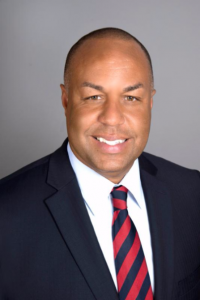 By Shawn Holt, CEO, Maryhaven
By Shawn Holt, CEO, Maryhaven
2020 has been a year where nearly every one of us has swallowed hard and made tough choices. The equation shifted from “What I would like to do,” to “What I have to do.”
Wear a mask. Don’t attend large public gatherings. Avoid contact with people highly vulnerable to COVID-19. Work from home. School my kids. The list can seem endless. And overwhelming.
And yet, we don’t have the luxury of ruminating on what we miss. Life goes on. So, we do what we have to do.
This reality has been on the minds of our Board and leadership throughout 2020. We kept our doors open even as staff and those we care for got sick. We just found new ways to protect and still serve. We persevered even as tough economic times threatened our fiscal stability. We simply decided we had to find a way. That’s what we do.
All the time and every day we were reminded that, just below the surface of the health and economic pandemics, another epidemic is raging. Viruses and business closings don’t stop addiction. In fact, the trauma, anxiety and isolation feed it, pushing people to feel that relapse is the only escape from the pain.
We at Maryhaven are acutely aware of the rise of relapse and overdose deaths. Even though we have taken a number of steps to be immediately available when people want help and to ensure that short-term interventions lead to long-term recovery, we began seeing a sad trend starting late in 2019.
First, we experienced a decline in demand for adolescent beds, a decline that started with federal, state and local behavioral health leaders concluding that kids should be treated in their home environment where ever and whenever possible. The research demonstrated that young people recover faster and stay on a more positive track in a home or home-like setting as compared to residential treatment centers. We applaud and agree with this shift in policy.
That said, COVID-19, as it did to so many other issues, accelerated the decline in need for adolescent in-patient services. As schools closed and fewer families visited health care centers, teachers, counselors and physicians of course began making less referrals for treatment.
As this decline continued, the demand for adult treatment continued to rise and we once again were forced to resort to waiting lists. After a thorough review and lots of introspection, our Board and leadership team decided that we should respond to the community. As a result, we began the process in late summer of 2020 to discontinue adolescent in-patient services and transform 53 beds into adult residential care. We will, of course, continue serving adolescents on an out-patient basis, offering individual and family counseling.
Just one month ago, 17 adults died of overdose in one weekend. That same weekend, we had waiting list for adult care and open beds in the adolescent unit.
It was a sad and yet urgent reminder: adding to our adult treatment capacity is just what we have to do.